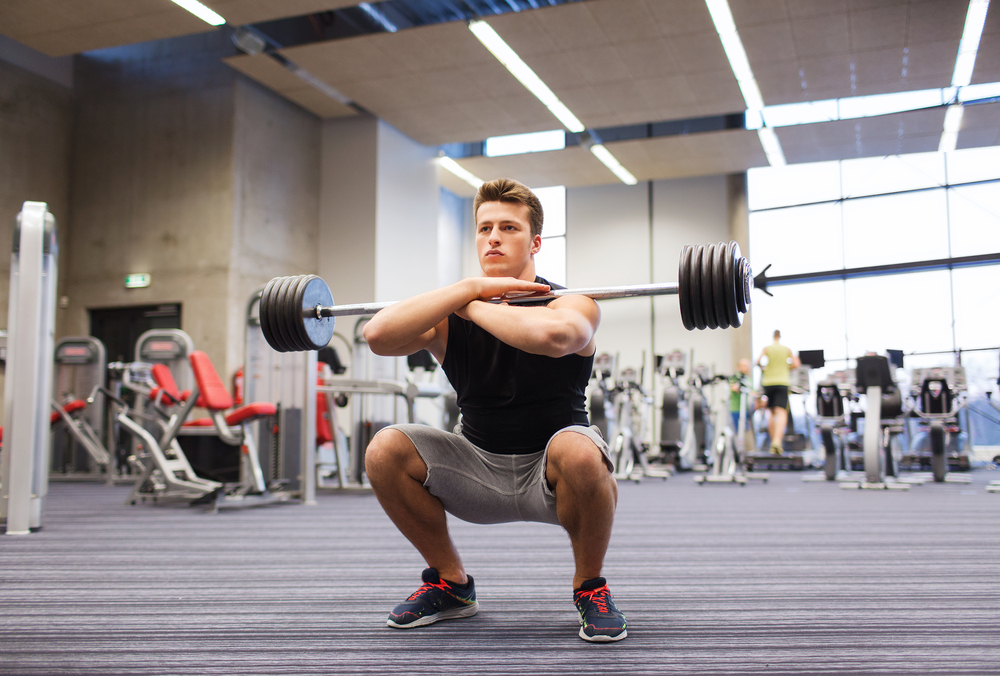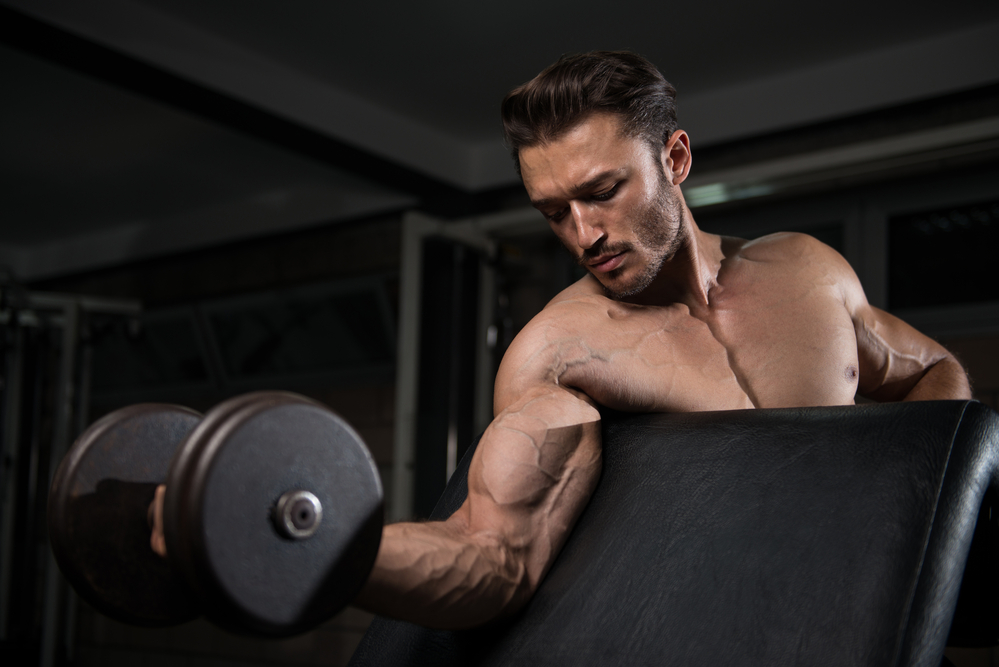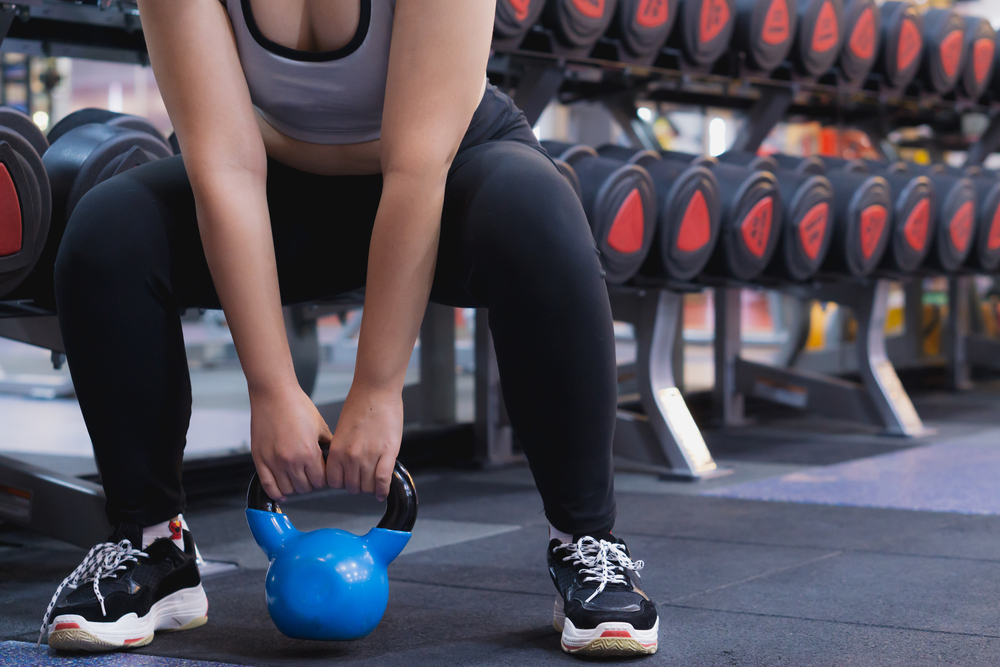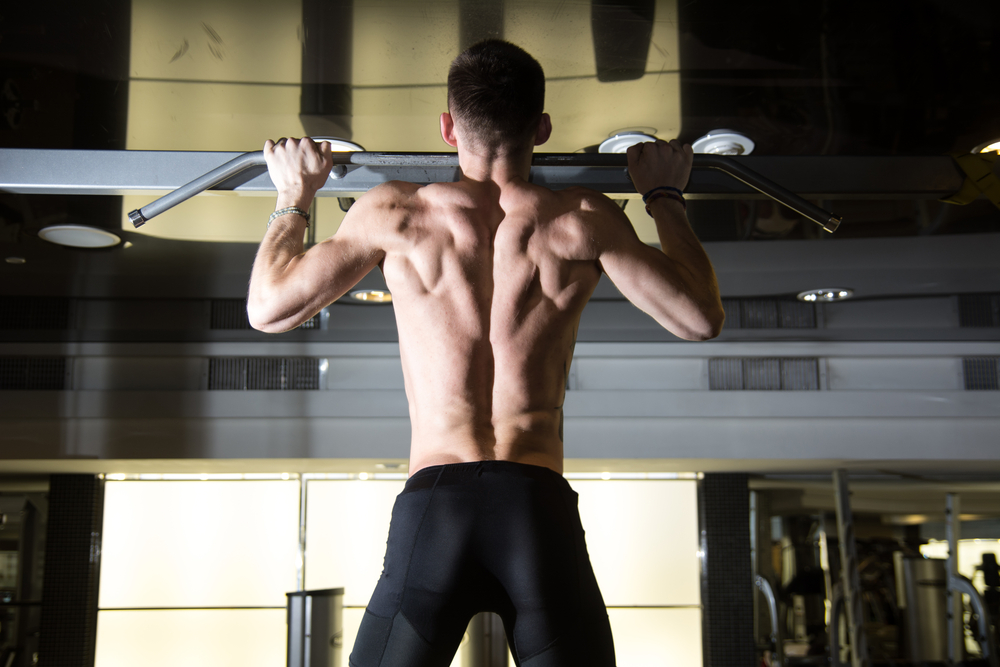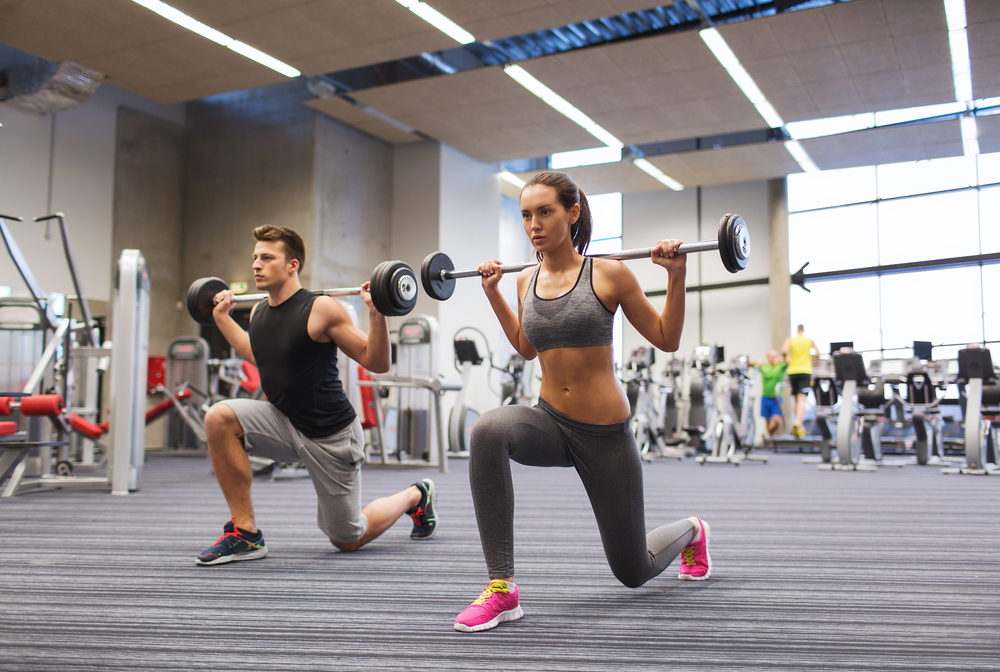
Table of Contents
Barbell lunges are a classic hip and glute exercise, used alongside squats and leg presses. Many athletes confirm the effectiveness of the lunges. The exercise is invariably featured in training programs for the lower body, and is often mentioned in books on fitness and bodybuilding.
What are lunges for?
Barbell lunges allow you to create a load on several muscle groups at the same time. As a result, the exercise is considered basic.
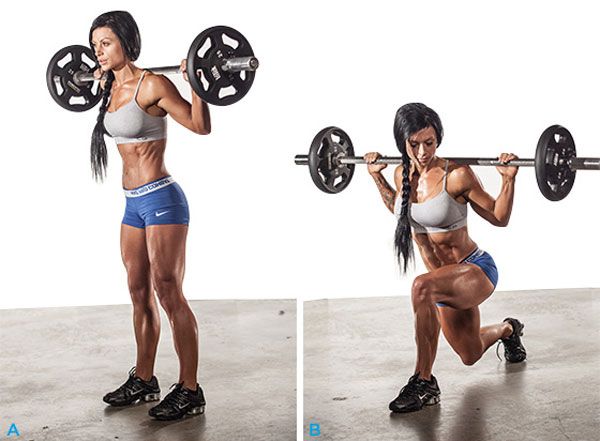
Working muscles:
The quadriceps are the largest muscles in our body that extend the legs at the knee joints
The back of the thigh: hamstrings, semitendinosus, and semimembranosus muscles. These muscles flex the knee and extend the hip joint
The gluteus maximus muscles, which actually form the buttocks. They unbend the body
In addition, some stress goes on the calves and muscles, the stabilizers of the body. Your core muscles are actively engaged when you are doing a free barbell exercise, and you have to, among other things, maintain balance. If you do lunges in Smith, the trajectory of the bar is fixed, and there is almost nothing to stabilize.
Thus, the main benefit of lunges is the comprehensive development of the muscles of the legs and buttocks. It is worth saying that the exercise is quite variable. That is, by changing the width of the stride, you can shift the emphasis of the load towards the quadriceps or gluteal muscles.
In addition, like other lower-body exercises, lunges increase blood circulation in the pelvic area, which is beneficial for the health of the internal organs. Exercise helps to cope well with the manifestations of cellulite.
Contraindications
Barbell lunges train muscles well since they allow you to create significant stress on them. But this load can be detrimental to the joints, especially the knee joints. For injuries or any pain in the knees, lunges are contraindicated.
If your knees are healthy, so as not to get injured while doing the exercises, do everything according to the instructions. Do not extend the knee of the front leg beyond the toe line (this creates a traumatic load) and do not touch the floor with the knee of the supporting leg.
Exercise technique
As I mentioned above, this is a variable exercise. Therefore, first, we’ll consider the classic version and then list the possible variations.
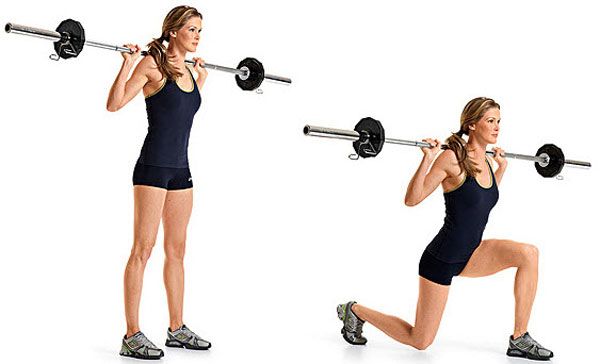
Choose the width of your stride so that the knee of your front leg should form a right angle when bending. With the supporting leg, things are not so hard. You can put the second leg closer to the leading one so that the knee is bent at a right angle. In this case, the main load during the exercise will be on the quadriceps. If you put your supporting leg a little further and bend your knee at an angle of more than 90 degrees, you’ll force the buttock to work more.
The exercise itself:
https://www.youtube.com/watch?v=g8x9ck225ZE
The number of sets and reps per exercise will depend on your training goals. As a rule, lunges are done 10-15 reps in 3-4 sets on each leg. If the goal of training is fat burning, the exercise is performed in a multi-repetitive mode, that is, at least 20 reps per set. The weight, accordingly, is reduced.
It’s best to do barbell lunges in the middle or at the end of your leg workouts, such as after squats or leg presses.
Exercise variations:
As already mentioned, you can change the width of your stride, thus shifting the load on the quads or gluteus maximus
By placing your working leg on small support (10-15 cm), you’ll increase the stretch of the gluteus muscle at the bottom of the movement
You’ll load the muscles of the working leg as much as possible if you lift the supporting leg onto the stand
You can do lunges with dumbbells. Hands should be lowered along the body. The load on the spine will be slightly reduced
Fat burning training often uses walking lunges. You don’t have to stand with both feet on the floor with your knees bent. You take step forward or backward, or alternate legs. You can generally lunge around the gym.
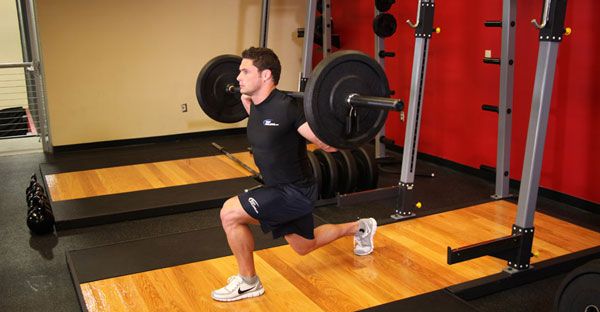
Such training, although it burns a large amount of energy, doesn’t allow the muscles to be loaded to the maximum. While you lunge on one leg, the other is resting. And before the working leg has time to get tired, you immediately change it. Therefore, when training for weight, it is better not to use dynamic lunges.
Typical mistakes
To avoid injuring your legs, follow your technique and do not make mistakes:
Do not extend the knee of the working leg beyond the toe line. The supporting leg is always on the toe and does not touch the floor with the knee
When doing lunges with a free barbell, do not place your feet in one line. This’ll make it extremely difficult for you to keep your balance. The legs are in a natural position
Keep your back straight. You have weight on your shoulders. Therefore, with any flexion of the spine, a traumatic load arises
Be sure to warm up your muscles and ligaments before exercising
If at the chosen weight, it’s difficult for you to keep balance or it is impossible to perform the exercises cleanly, reduce the load. Alternatively, try using a Smith machine
By following these guidelines, you can make your workout productive and safe. Lunges are considered one of the most effective exercises for developing muscles in the lower body for a reason. Have patience, aim for results, and you’ll definitely be satisfied!



